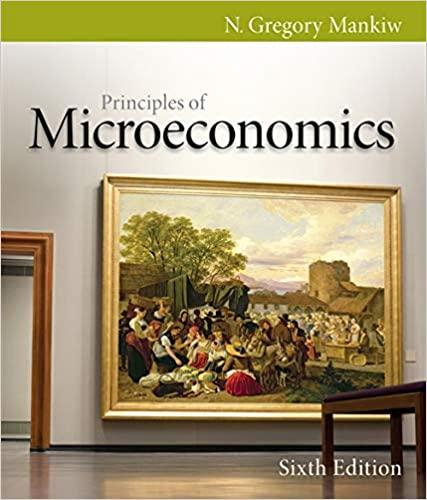The town of Wiknam has 5 residents whose only activity is producing and consuming fish. They produce
Question:
The town of Wiknam has 5 residents whose only activity is producing and consuming fish.
They produce fish in two ways. Each person who works on a fish farm raises 2 fish per day. Each person who goes fishing in the town lake catches X fish per day. X depends on N, the number of residents fishing in the lake. In particular, X = 6 – N.
Each resident is attracted to the job that pays more fish.
a. Why do you suppose that X, the productivity of each fisherman, falls as N, the number of fishermen, rises? What economic term would you use to describe the fish in the town lake?
Would the same description apply to the fish from the farms? Explain.
b. The town’s Freedom Party thinks every individual should have the right to choose between fishing in the lake and farming without government interference. Under its policy, how many of the residents would fish in the lake and how many would work on fish farms? How many fish are produced?
c. The town’s Efficiency Party thinks Wiknam should produce as many fish as it can. To achieve this goal, how many of the residents should fish in the lake and how many should work on the farms? (Hint: Create a table that shows the number of fish produced—on farms, from the lake, and in total—for each N from 0 to 5.)
d. The Efficiency Party proposes achieving its goal by taxing each person fishing in the lake by an amount equal to T fish per day. It will then distribute the proceeds equally among all Wiknam residents. (Fish are assumed to be divisible, so these rebates need not be whole numbers.) Calculate the value of T higher fares during rush hours than during the rest of the day. Why might they do this?
Step by Step Answer:







